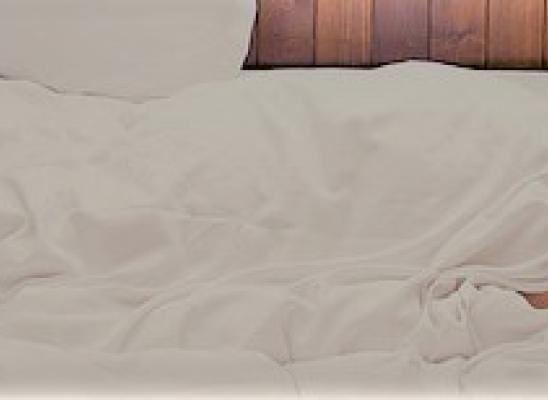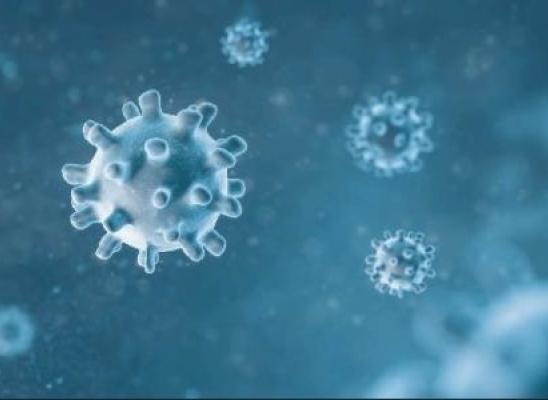Brain Activity in Hair-Pulling and Skin Picking Disorders - What Does Neuroimaging Have to Say?

Online test
Find out the severity of your symptoms with this free online test
Researchers continue to explore mental health disorders known as body-focused repetitive behaviors (BFRBs). Less than 3% of the general population struggles with BFRBs like excoriation (skin-picking disorder or SPD) and trichotillomania (hair-pulling disorder or HPD). Researchers suggest that BFRBs, especially, HPD, are more common in women than men. They have also found that approximately 38% of people with SPD also have HPD. BFRBs are chronic conditions that last a lifetime.
Although, most people form “habits” like picking at their skin or pulling at their hair when they are stressed, overwhelmed, upset, or nervous, people with BFRBs like SPD or HPD excessively engage in these behaviors until it causes wounds or drastic changes in appearance. People who struggle with HPD typically pull at their hair until they have shortened pieces of hair, bald spots, damaged hair follicles, and/or scalp wounds.
While people with SPD tend to pick or scratch at their skin until they are left with a host of new and old scratches, scabs, scars, and skin damage. Because the resulting damage is extensive, these individuals are forced to spend hours “covering up” or “disguising their wounds” so no one else will know what is happening.
But, regardless of what people with HPD or SPD do to conceal the damage or stop the behavior, the urges and the need to do something to ease the stress and anxiety reoccur. The only thing that can stop this cycle of compulsive or ritualistic behavior is treatment. Most researchers and mental health professionals agree that there is a reason why people engage in BFRBs like SPD and HPD.
These behaviors serve a purpose and for some, it is to provide an emotional release. For others, however, the hair-pulling or skin-picking pulls them into a trance-like, vegetative state, so that the behaviors occur outside of their awareness.
In other words, the BFRBs typically take place while these individuals are bored or “zoned-out.” They only become aware of their behavior after they emerge from the “trance” and look in a mirror. But although, many experts believe that BFRBs like SPD and HPD are forms of obsessive-compulsive disorder (OCD) – existing within an OCD spectrum, others aren’t sold on this theory. These experts believe that BFRBs are similar to OCD, but they are different conditions.
However, research is limited when it comes to BFRBs, and specifically what causes them to manifest. Is there a neurobiological component involved and is there a difference in brain activity between people with SPD and those with HPD? Questions like that prompted a group of researchers to explore the neurobiological connection between HPD and SPD to see if there is a difference in brain function in people, who compulsively pull their hair and those, who compulsively pick at their skin. These researchers used neuroimaging to take an in-depth look at the brains of people with SPD and those with HPD to see what new information they could glean on BFRBs.
Brain Function & BFRBS
Researchers decided to explore the parts of the brain responsible for stopping inappropriate motor responses and controlling impulsivity and compulsivity in people with HPD and SPD. What they found is that the idea of a “reward” drove people with some BFRBs to perform ritualistic behaviors like hair-pulling, skin-picking, or nail-picking. This explains why some people with BFRBs receive satisfaction, pleasure, joy, and emotional release from pulling or picking at their hair or skin. This "mishap" causes a release of pressure, which in turn makes them feel good.
Researchers also found that a change in the brain’s anterior cingulate cortex (the part of your brain that is responsible for high-level cognitive functions like empathy, impulse control, emotion, and decision-making skills) and a disruption in an individual’s “dopamine reward system” may contribute to the urge to engage in BFRBs.
It is important to understand that a malfunction in this system can send the wrong signals to this system, causing people with BFRBs to equate gratification, release, and happiness with performing ritualistic behaviors like hair-pulling or skin-picking. Because engaging in this behavior brings these individuals joy they continue to do it.
Keep in mind that in some situations, compulsivity is necessary to avoid harm, injury, or death. However, neuroimaging tests suggest that people, who engage in BFRBs have a higher level of “connectivity” between the orbitofrontal cortex (the part of the brain that contributes to decision-making practices) and basal ganglia (a part of your brain that processes information and decides when and how to react and move in a given situation).
And, because people with BFRBs experience hyper-connectivity in their brains, they also have hyper-stimulated learning and rewards systems. The result? The compulsions (rituals and routines) become “learned behaviors.”
But, Are There Any Differences in Brain Activity Between SPD and HPD?
Yes.
In 2014, Annerine Roos, Jon E. Grant, Jean-Paul Fouchea, Dan J. Steina, and Christine Lochner, mental health researchers from the University of Chicago and the University of Cape Town conducted the first research study on brain activity differences between SPD and HPD. They undertook this task because of the significant overlap in clinical features between the two conditions.
Unfortunately, however, they stumbled across a few obstacles, one of which was that structural brain comparison studies are limited. Thus, the goal of their study was to compare brain structure volumes and cortical thickness in individuals with SPD and HPD to determine if frontostriatal pathways play a role in the development of the two disorders, and if so how much.
So, 17 females with SPD, 17 females with HPD, and 15 females without SPD or HPD (as controls) participated in clinical assessments and structural MRI imaging. The aim was to examine group differences in SPD and HPD in brain volume and cortical thickness to determine which group’s compulsions were more severe.
Results
Study results indicate that there are differences in brain volume and cortical thickness between SPD and HPD. Researchers found that the bilateral ventral striatum (the part of the brain that manages your mood, ability to become addicted to things, and your ability to learn) was larger in participants with SPD than in those with HPD. This means that these participants were more sensitive to a stimulus (an event, situation, etc.).
Researchers also found that people with SPD had a smaller right hemisphere cortical thickness in the frontal areas (or an increased risk of psychological issues like depression) with a greater bilateral cuneus thickness (a heightened risk of exhibiting BFRB behaviors) than people with HPD or those who didn’t have SPD or HPD (the controls).
On the other hand, HPD participants had a reduced thickness of the right parahippocampal gyrus (the part of the brain responsible for memory), as compared to participants with SPD and those with SPD or HPD (the controls).
There also appears to be more significant involvement of ventral striatum in SPD, which may suggest a more involved “reward system,” while the increased parahippocampal gyrus involvement in people with HPD may correspond with dissociative symptoms often seen in people with this condition.
To sum it up, a malfunction in the “dopamine reward system” appears to trigger or worsen compulsions in people with SPD, while people with HPD are more at-risk of dissociative symptoms, for instance, “trance-like behaviors” like pulling your hair, while watching television.
What Does This All Mean?
Neuroimaging studies comparing SPD and HPD are limited, however, the 2014 Roos, Grant, Fouchea, Steina, and Lochner study suggests that (1) People with SPD have a greater volume of the bilateral accumbens (a part of the brain that is involved in the cognitive processing of motor function and reward and reinforcement), as compared to people with HPD and those without either condition. Also, people with SPD typically have a smaller right hemisphere cortical thickness, but greater bilateral cuneus bilaterally thickness, as compared to people with HPD and the controls, and (2) People with HPD have a smaller right parahippocampal gyrus thickness.
These findings are consistent with MRI studies that found that frontostriatal circuitry plays a significant role in “grooming disorders.” More specifically, researchers found that when SPD and HPD were compared, people with SPD had altered brain volume and cortical thickness in parts of the brain responsible for “stimulus-response habit formation.”
It is important to note that the repetitive nature of skin-picking suggests an underlying motor inhibitory control process dysfunction. Motor impulsivity involves automatically responding (skin-picking) to a specific stimulus – for instance, an upsetting day at work.
The researchers also found that people with SPD tend to have an impaired stop-signal inhibitory control that makes it hard for them to stop picking at their skin – as compared to people with HPD or healthy individuals. In other words, people with SPD also have a harder time controlling their behavior or knowing when to stop (greater impairment of inhibitory control), as compared to people with HPD.
Moreover, people with SPD tend to have a “rewards deficiency” or a “poor motor inhibition” (or control) over their behavior, as compared to those with HPD and those without SPD or HPD. This suggests that the desire to replace the missing “reward” triggers or worsens skin-picking behaviors.
In other words, stress-relieving rituals trigger the tactile and visual parts of the brain in people with SPD. More so, in people with SPD, the interconnected visual and sensorimotor systems and frontal areas become hyper-stimulated in reaction to specific stimuli, which then triggers repetitive stress-relieving behaviors.
Conversely, people with HPD have a reduced right parahippocampal thickness. This part of the brain involves memory, especially in a social context. This part of the brain is also linked to dissociative behaviors, which is why people with HPD tend to feel as if they are floating outside of their bodies.
There are other differences between the two conditions, for instance, skin-picking is more common in males, while hair-pulling is more common in females. Moreover, people with SPD are more likely to respond to antidepressants like SSRIs, while the medications tend to be ineffective for people with HPD.
Even though some researchers view HPD and SPD as the same disorder, others feel like there isn’t enough data to definitively determine the accuracy of this theory. So, results indicate that brain function and its accompanying “reward system” may play a bigger role in SPD than in HPD. While mental health and dissociation appear to play a bigger role in HPD.
References
1. Roos, A., Grant, J. E., Fouche, J. P., Stein, D. J., & Lochner, C. (2015). A comparison of brain volume and cortical thickness in excoriation (skin-picking) disorder and trichotillomania (hair-pulling disorder) in women. Behav Brain Res, 15, 279. Retrieved from https://pubmed.ncbi.nlm.nih.gov/25435313/
2.Legg, T. J. (2019). What to know about skin picking. Medical News Today. Retrieved from https://www.medicalnewstoday.com/articles/325925
3. Anxiety and Depression Association of America. (2020). Body-focused repetitive behaviors (BFRBs). Retrieved from https://adaa.org/body-focused-repetitive-behaviors#Facts
4. Psychology Today. (2020). Body-focused repetitive behaviors. Retrieved from https://www.psychologytoday.com/gb/basics/body-focused-repetitive-behaviors
5. Mouton-Odum, S. (2020). Impulsive? Compulsive? The nature of BFRBs. Psychology Today. Retrieved from https://www.psychologytoday.com/us/blog/touchy-subject/201808/impulsive-compulsive-the-nature-bfrbs
6. Elliott, P. (2020). BFRBs: Not OCD, not self-harm. How and why. Courage Counseling. Retrieved from https://courage-counseling.com/bfrbs-not-ocd-not-self-harm-how-and-why/
7. Blum, A.W., Chamberlain, S. R., Harries, M. D., Odlaug, B. L., Redden, S. A., Grant, J. E. (2018). Neuroanatomical correlates of impulsive action in excoriation (skin-picking) Disorder. J Neuropsychiatry Clin Neuroscience, 30(3), 236-241. Retrieved from https://pubmed.ncbi.nlm.nih.gov/29685064/
8. Grant, J. E., Daws, R., Hampshire, A., & Chamberlain, S. R. (2018). An fMRI pilot study of cognitive flexibility in trichotillomania. The Journal of neuropsychiatry and clinical neurosciences, 30(4), 318–324. Retrieved from https://doi.org/10.1176/appi.neuropsych.18030038
Online test
Find out the severity of your symptoms with this free online test
Start your journey with SkinPick
Take control of your life and find freedom from skin picking through professional therapy and evidence-based behavioral techniques.
Start Now


